
Happy to say our Women of the West Show is up at the Brazosport Art League, 400 College Blvd, Clute, TX 77531, 979-265-7661, through October 15, 2022.
| Home | Classes | Artist Bio | Silkscreens | Fabric Dyeing & Painting | Machine Embroidery | Contact Us |
|---|
| FABRIC PAINTING
|
Click on the Close-up Detailed images
to zoom in closer. Scroll down and click on "Next" to go to the next page. Happy to say our Women of the West Show is up at the Brazosport Art League, 400 College Blvd, Clute, TX 77531, 979-265-7661, through October 15, 2022. |
|
Women of the West by Ginny Eckley & Susan Ennis | |
Women of the West is a touring exhibition of Art Quilts and was selected by International Quilt Festival to appear at their 2019 show in Houston. These quilts were all made in collaboration with fellow art quilter, Susan Ennis. | |
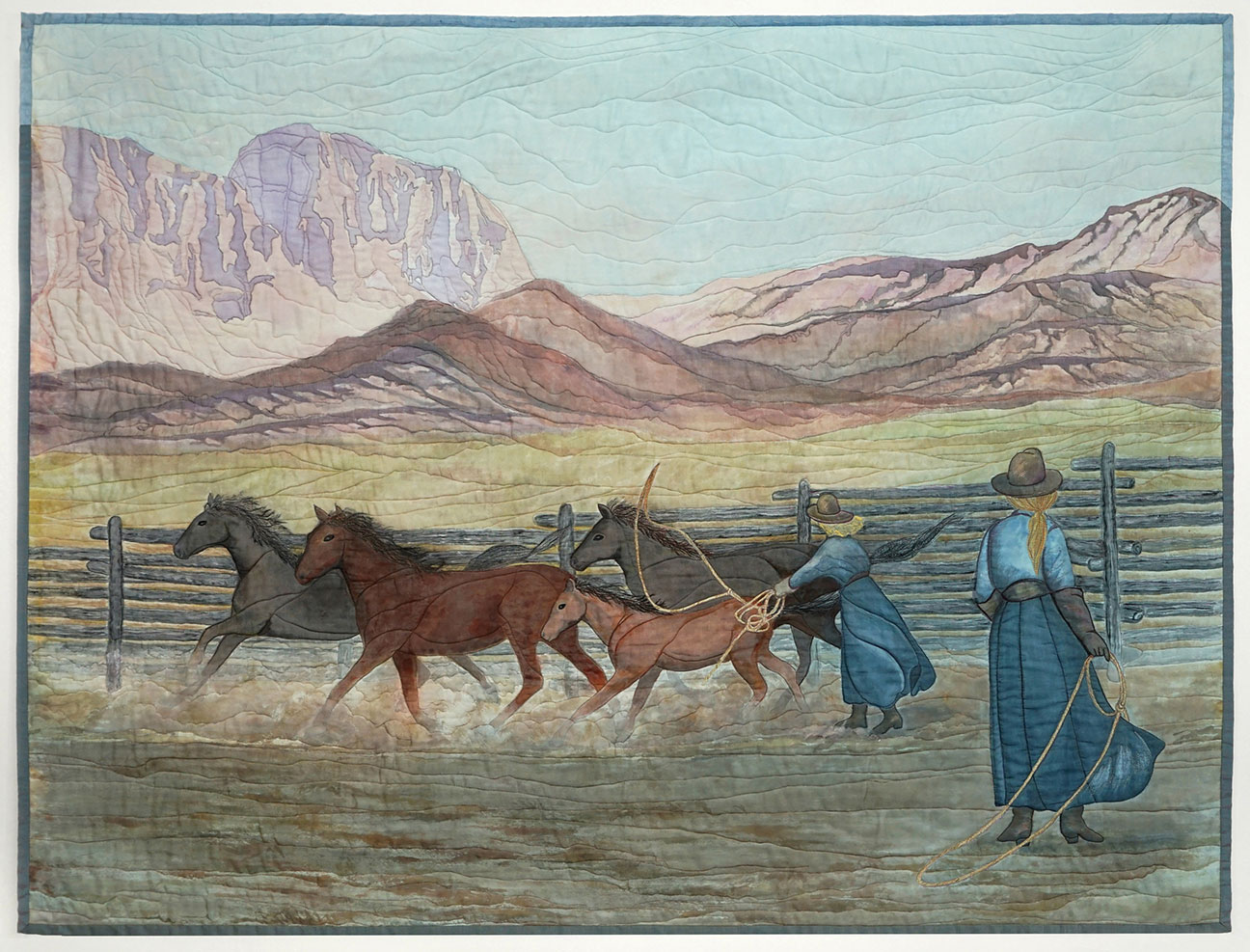 |
Close-up to show detail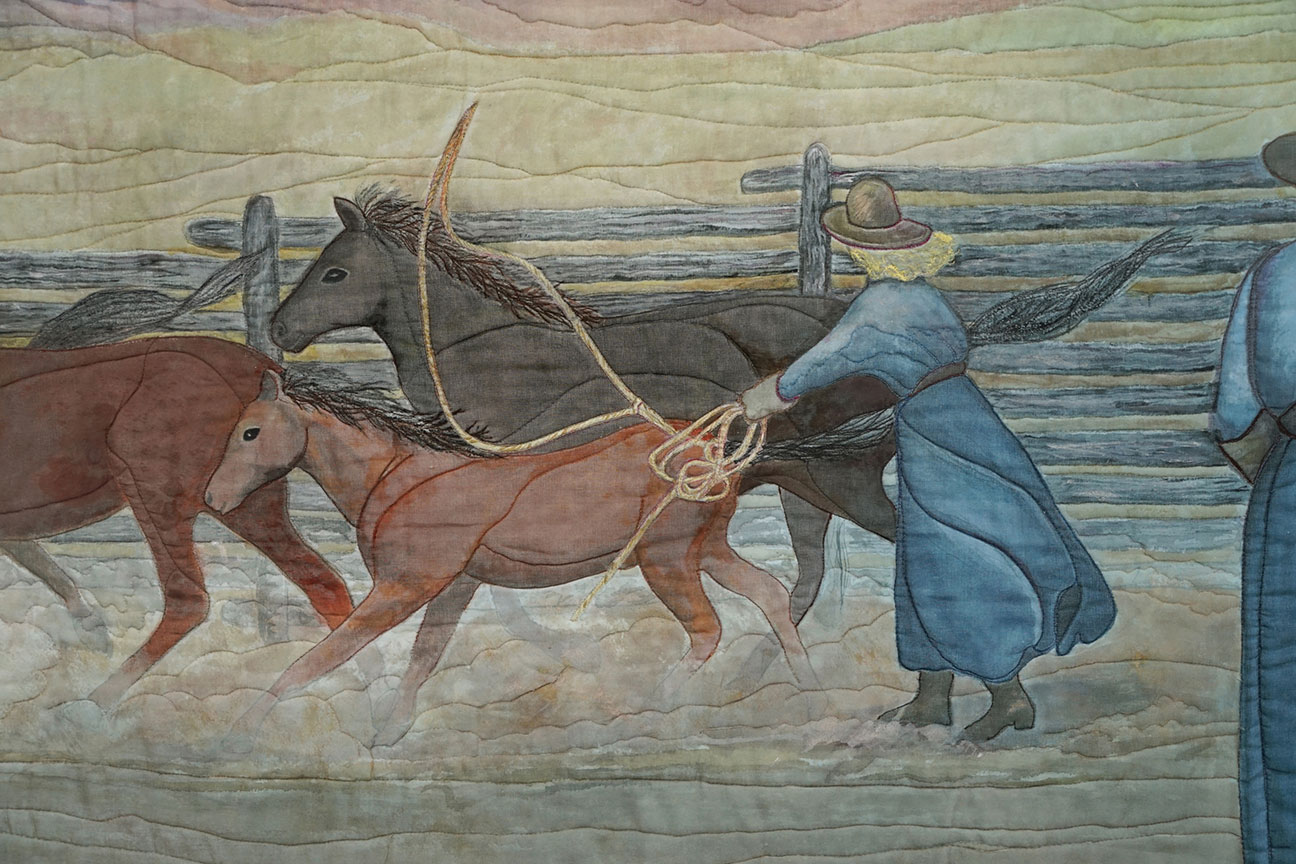
|
|
Sisters Taming Mustangs Women needed a combination of bravery and adventure to move and live out West. They soon acquired new skills, such as taming horses and branding cattle. Many were pioneers filled with grit, ambition and great determination. Often women teamed up with relatives and friends, working together to create a new life. Inspired by the women working together to obtain land, make a living, and survive out West. |
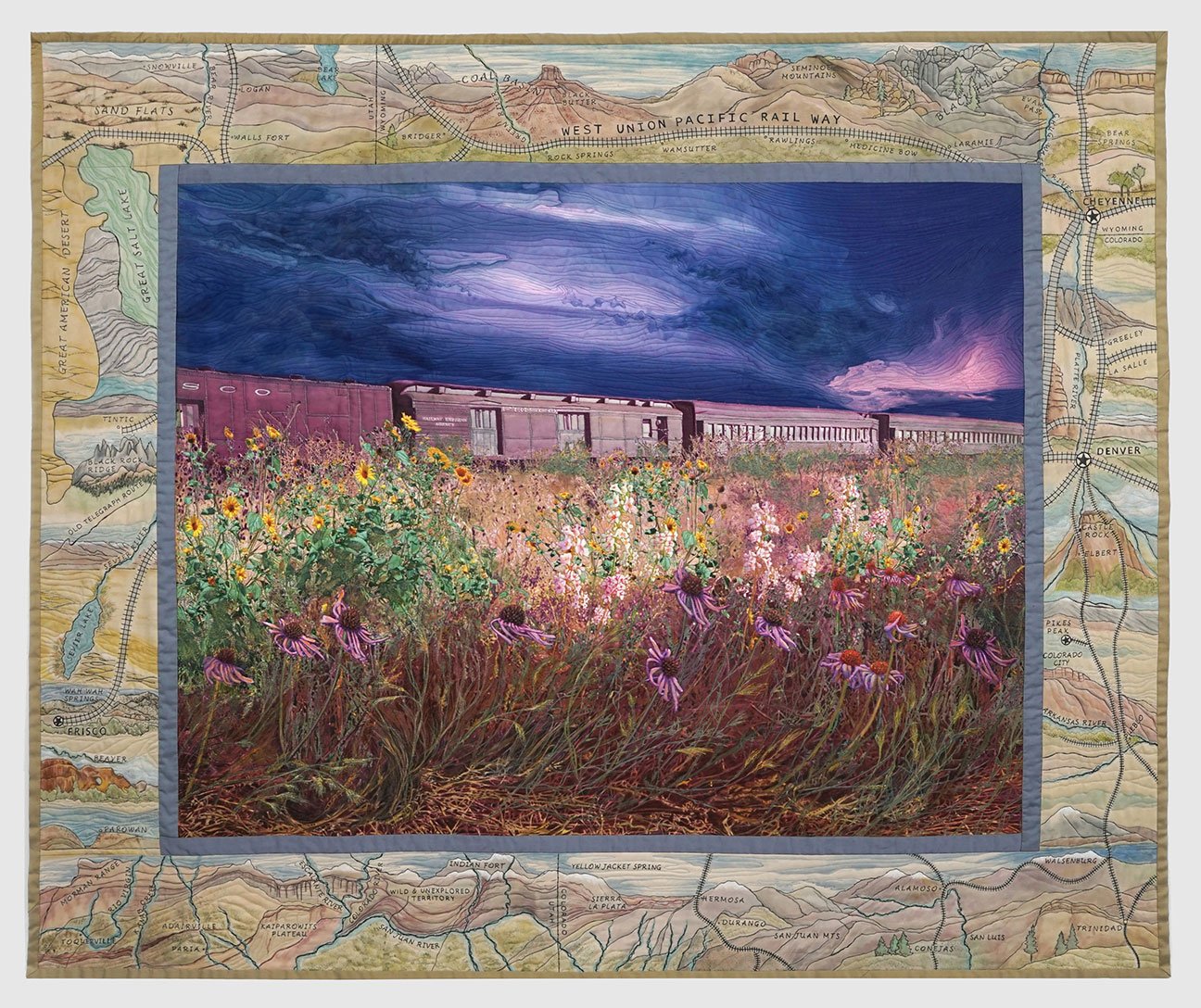 |
Close-up to show detail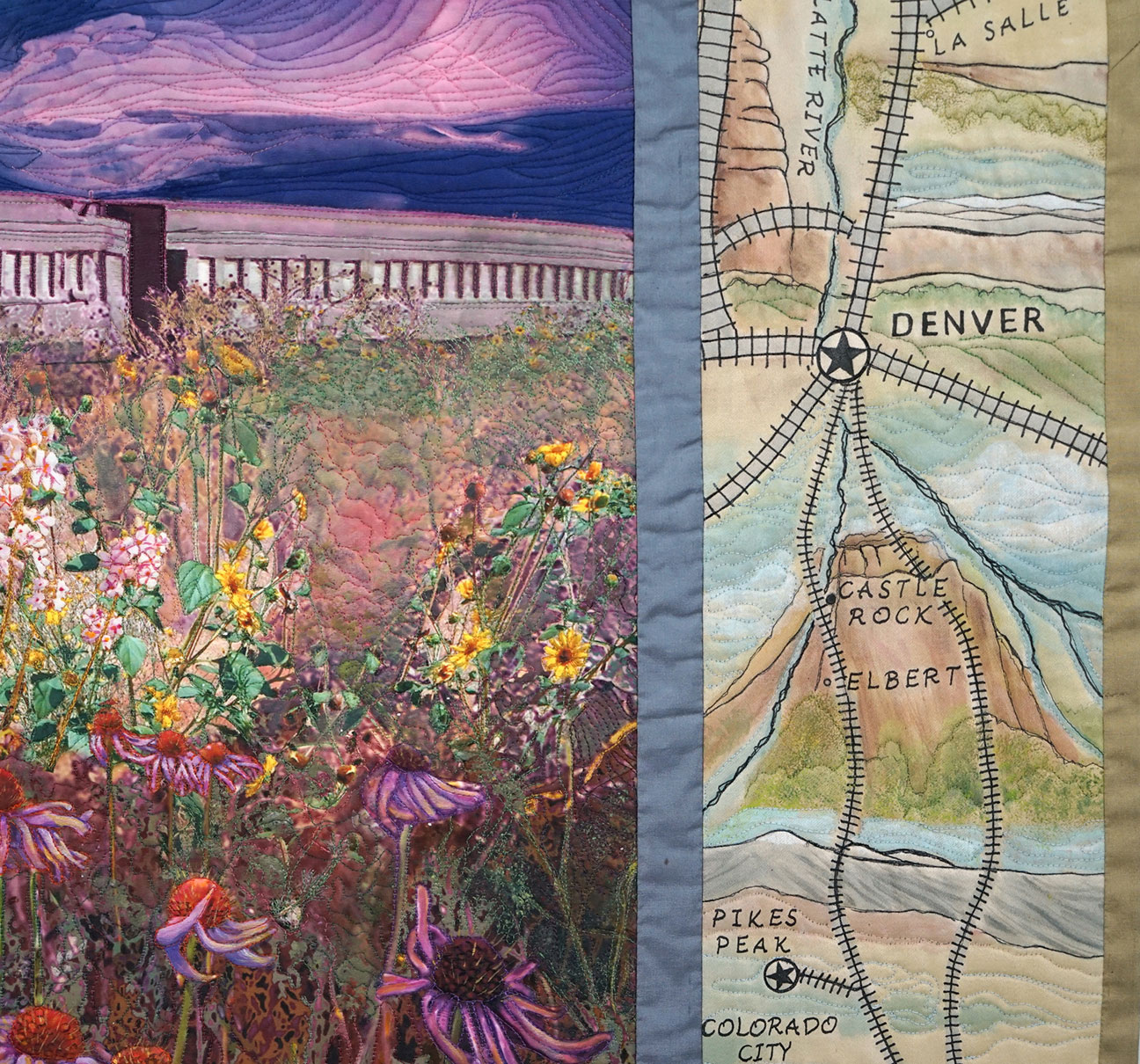
|
|
Trains Change the West In 1862, Congress passed the Pacific Railroad Bill and several grants that gave financial support for the Central Pacific and Union Pacific railroad companies. The Union Pacific Railroad built westward from Omaha, Nebraska. The Central Pacific Railroad built eastward from Sacramento, California. These two lines met at Promontory, Utah, in 1869. Travel and trade expanded, as trains provided a faster, safer way to transport goods and people across the country. Trains made travel faster, safer, and more accessible for single women that wanted to explore the West. |
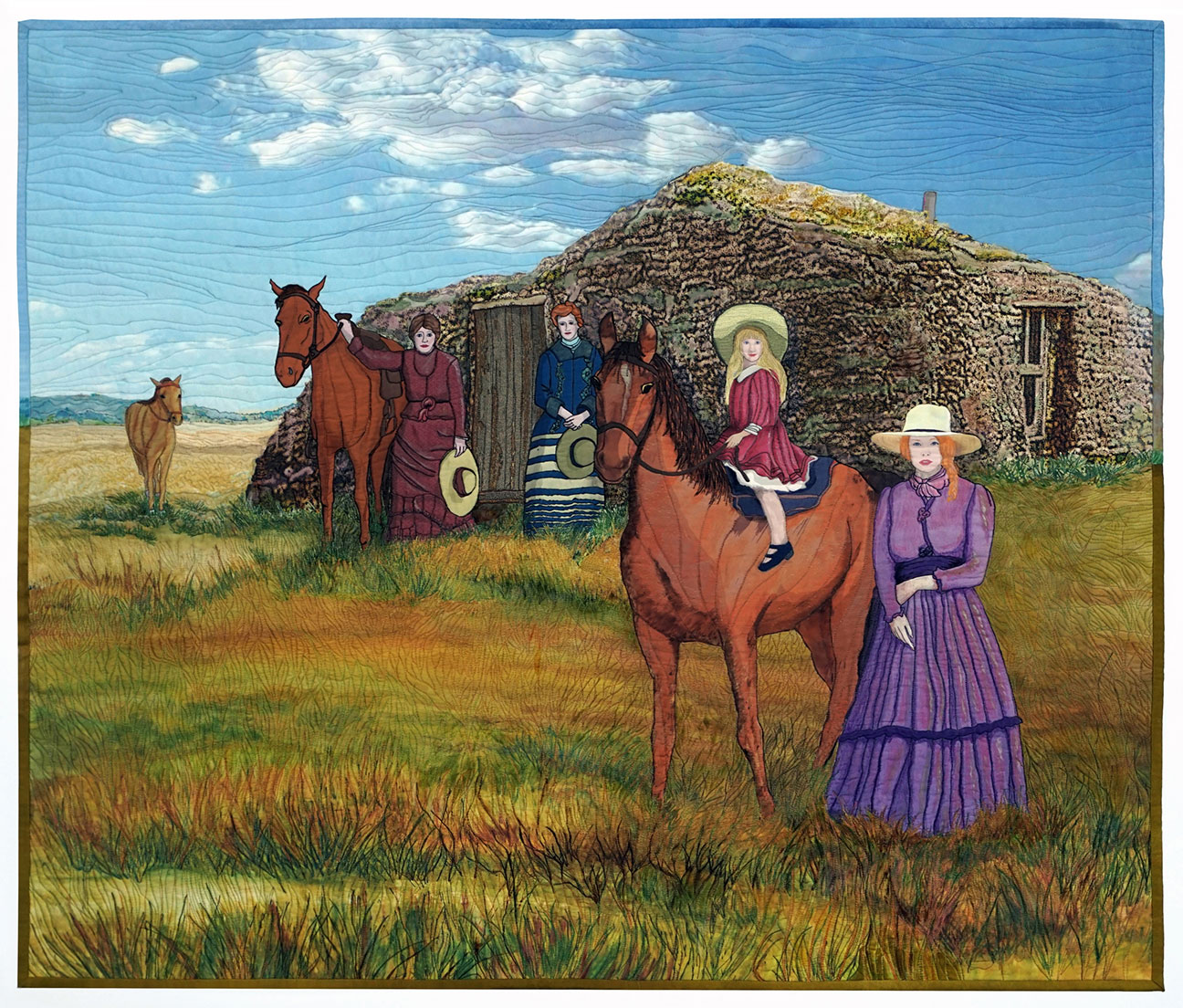 |
Close-up to show detail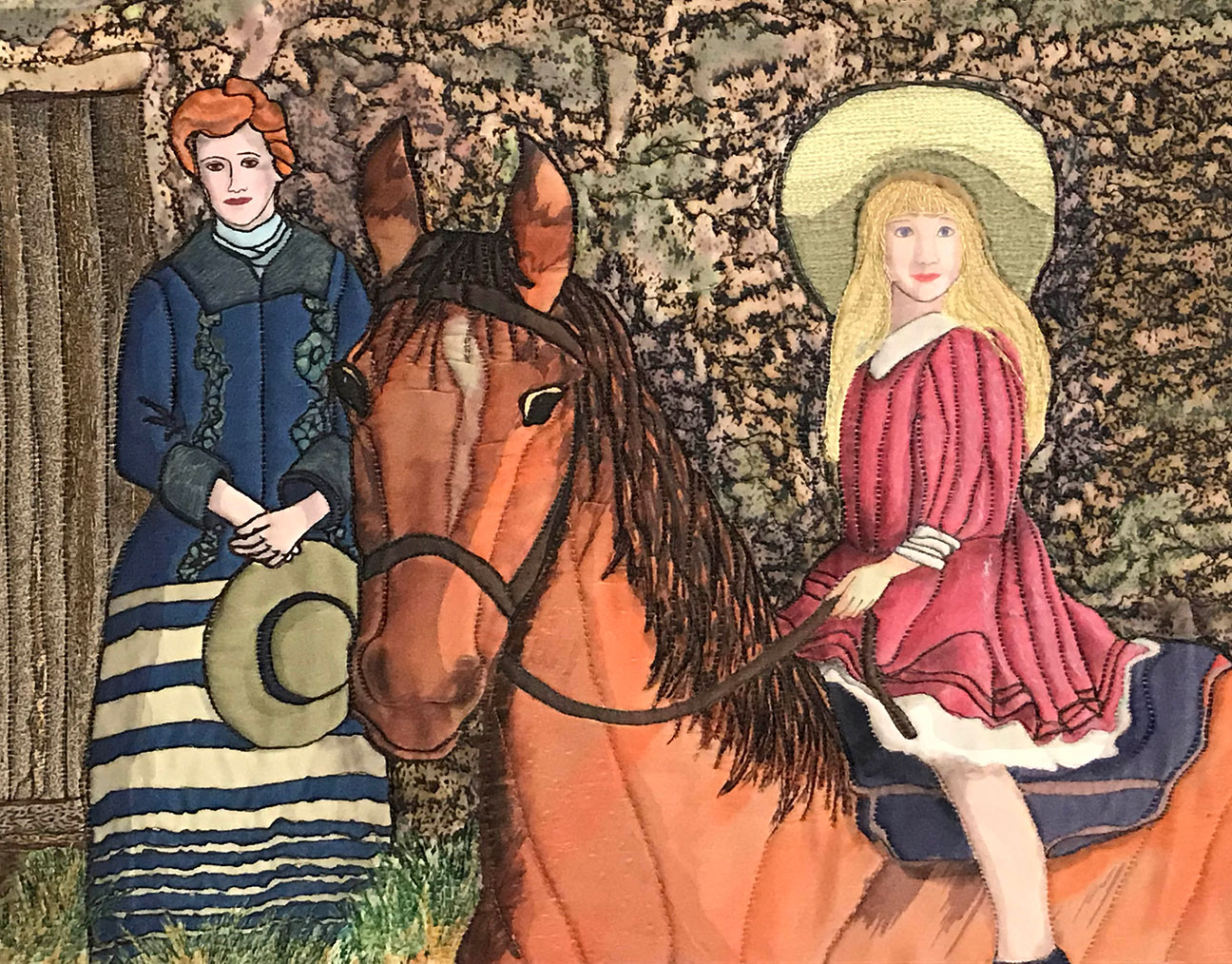
|
|
Homesteading: Turning a Soddy into a Home Thousands of women took advantage of the Homestead Act of 1862 that offered free land in the Great American Plains. Women who were single, widowed, divorced or deserted were eligible to acquire 160 acres of federal land in their own name. Building a home was an important undertaking. If the prairie lacked building materials, such as wood or stone, sod from prairie grass was used to create brick-like shapes that formed the walls of a home. The inspiration for this piece was discovered while finding historical state and city websites. We enjoyed these sites, as they told wonderful tales of pioneers from 1800's. Reading about making a sod house, along with amazing photos and stories, provided us with inspiration and knowledge for our designs. |
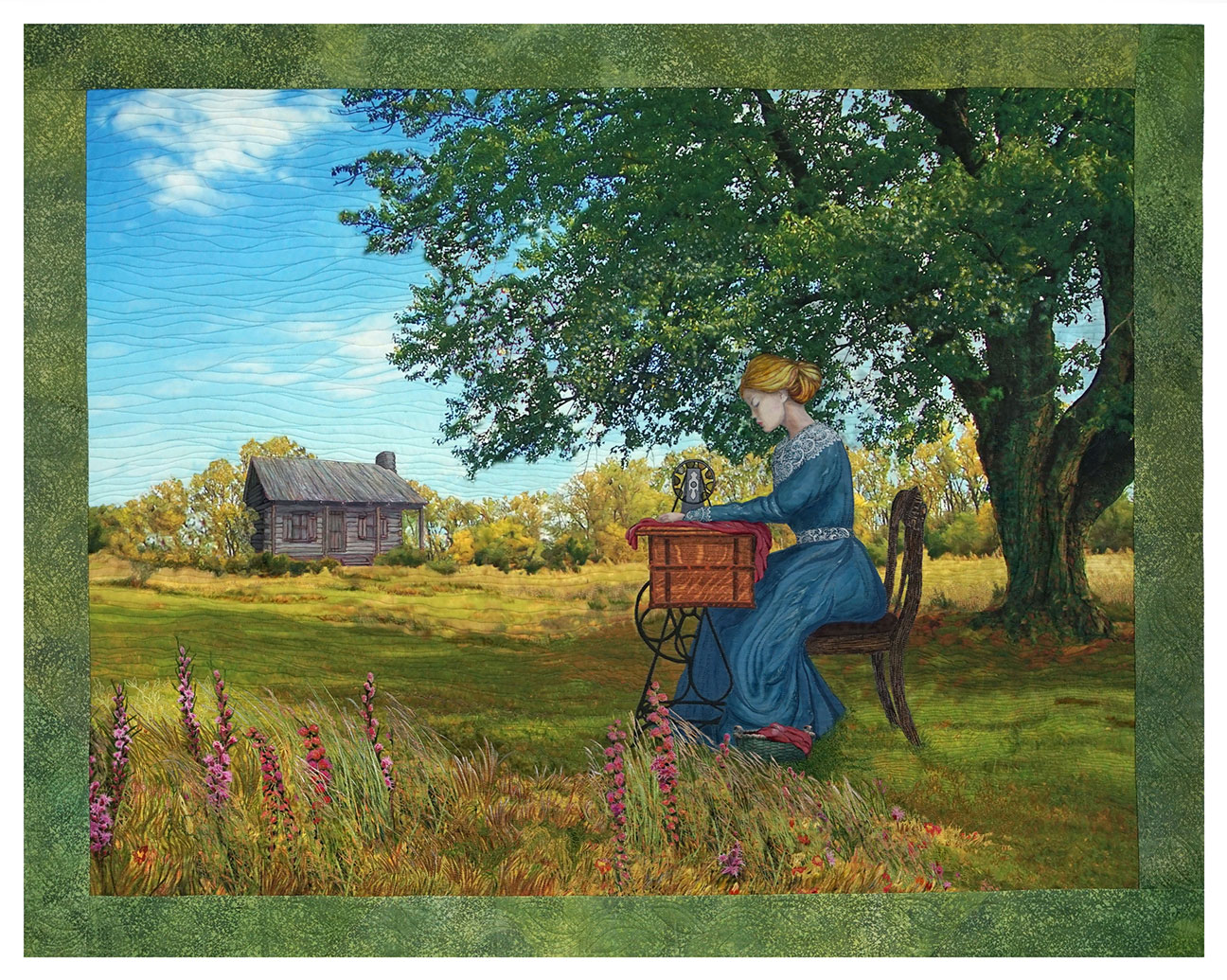 |
Close-up to show detail
|
|
A Homestead Adventure
Between 1862 and 1934, the federal government granted 1.6 million homesteads of federal land, for private ownership. European immigrants risked leaving their homes and countries, to start a new life. A number of immigrants moved from Switzerland, Norway and Sweden. Many died from the long trip over the ocean, contracting malaria from mosquitoes. Americans owe a debt of gratitude to immigrants who built towns, hospitals and schools. When immigrants came from other countries, they brought seeds and plants with them because they did not know what they would find in the new land. Women sewed packets of seeds in the hems of their dresses and in the brims of their hats and tucked tiny plants in their pockets and in the baggage they brought aboard ships so these items would not be taken away when they arrived in this country. |
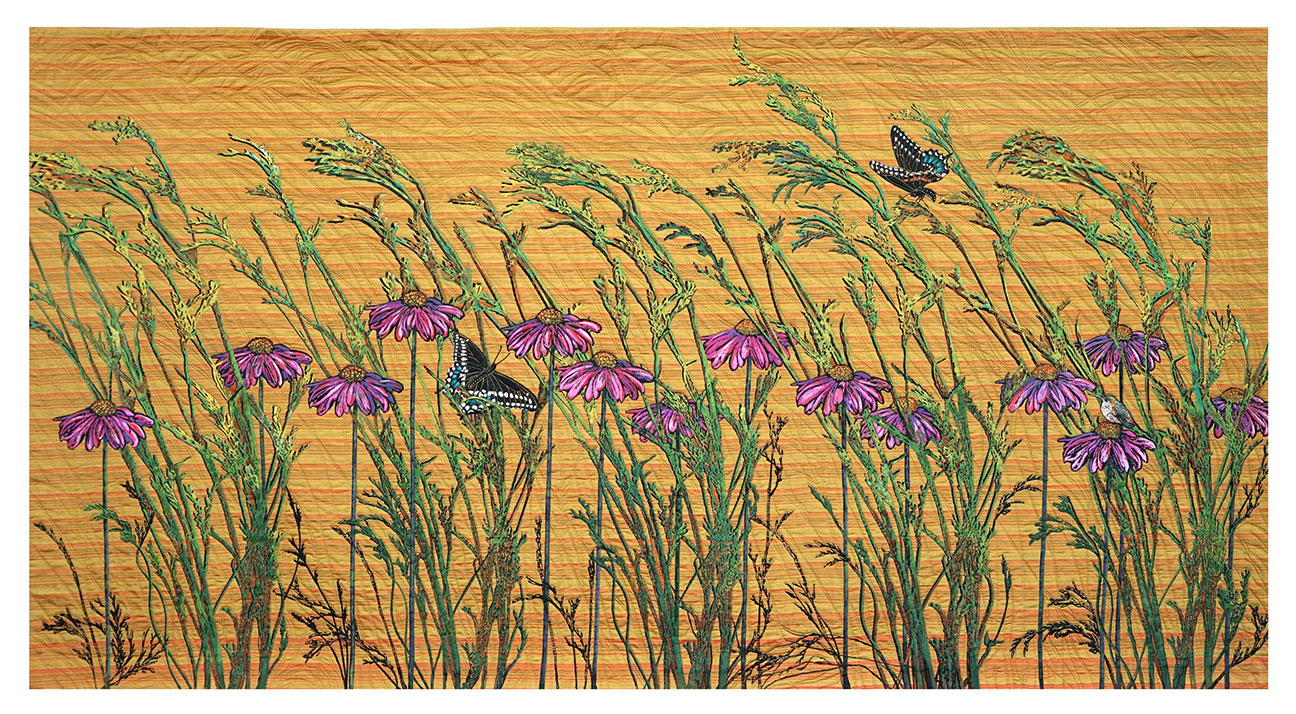 |
Close-up to show detail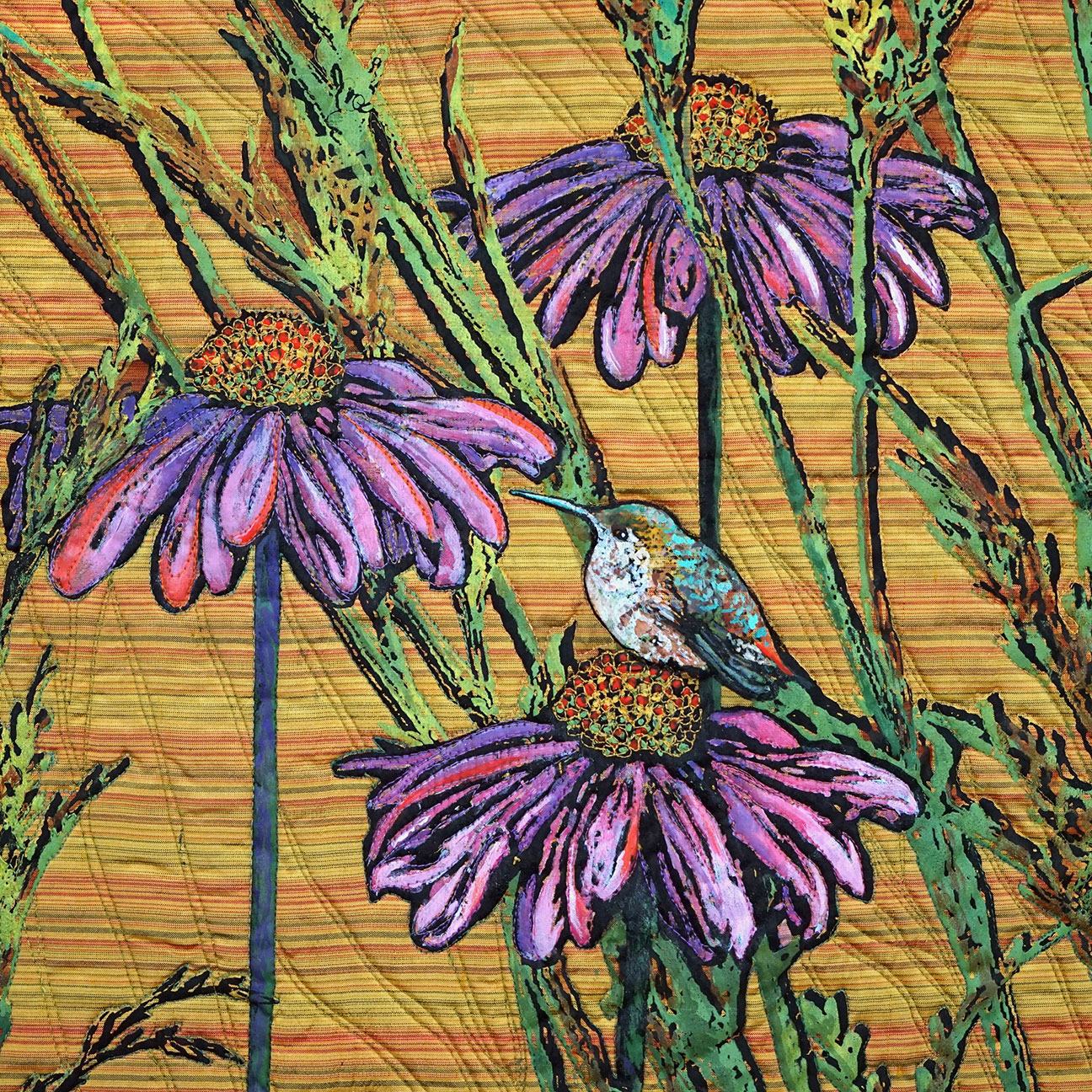
|
|
Prairie Grasses & Coneflowers Inspired by fields of tall prairie grasses and colorful wildflowers, we challenged ourselves to bring the beauty and joy of nature, together with art and fabric. The golden background is a thin, striped silk, dyed to capture the warm tones of the prairies in bloom. The tall prairie grasses are silk-screened in sections. Once screened, everything is hand-painted, adding layers of color. The final printing step was adding two butterflies and a hummingbird. |
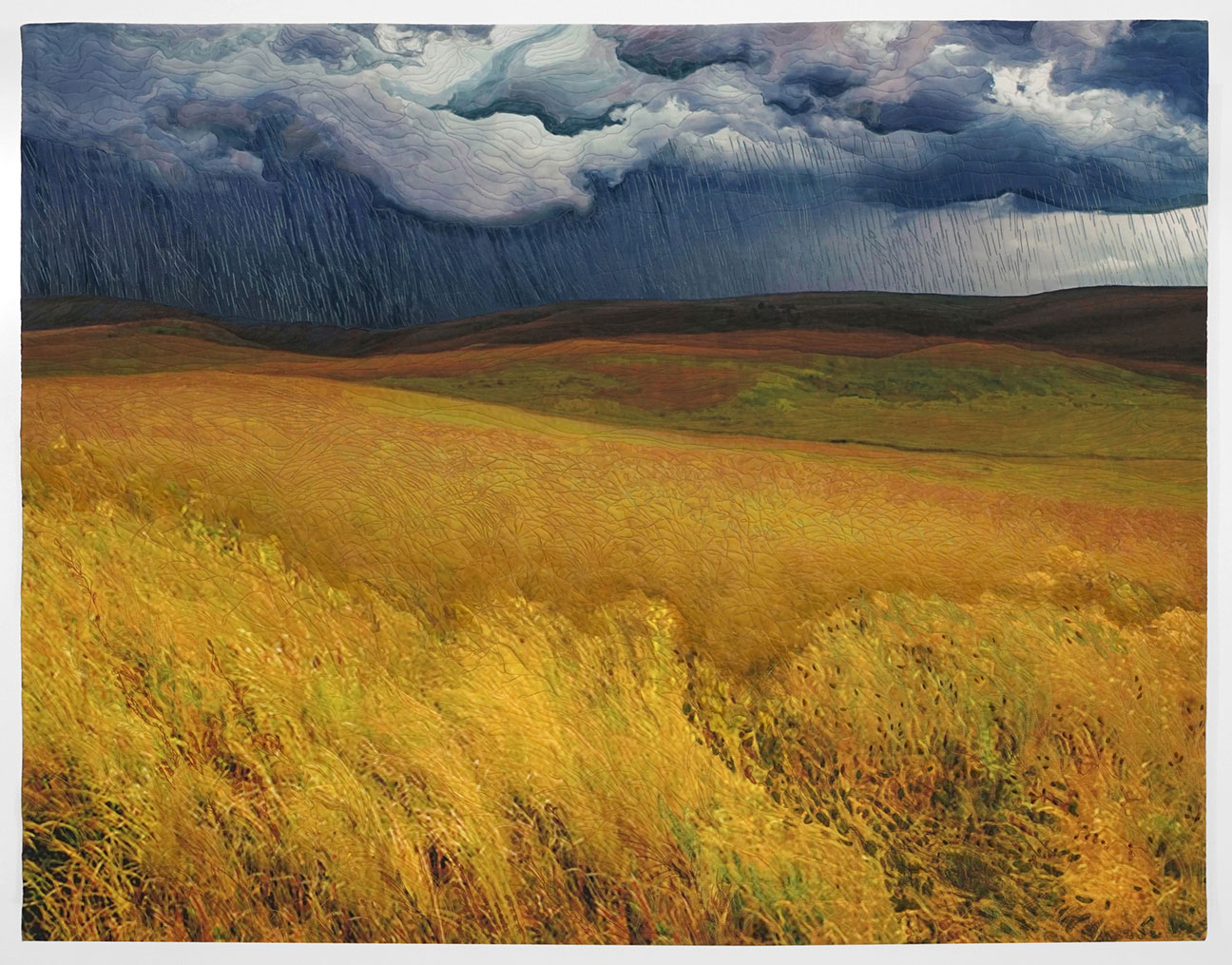 |
Close-up to show detail
|
|
A Texas Blue Norther SOLD - Will not tour. This is a fast moving cold front, marked by an exceptionally rapid drop in temperatures, strong winds and dark blue skies. The cold front originates from the north, and can send temperatures plummeting by 20 or 30 degrees in minutes. On clear fall days, white clouds rise from the prairie and the storm quickly envelopes the horizon. One of the most descriptive books about the weather the homesteaders faced is, "The Deadliest Woman in the West: Mother Nature on the Prairies and Plains" by Rod Beemer. The Panhandle was an expanse of endless prairies that hosted vicious weather extremes. It could be swept by a blistering south wind that licked up all remnants of moisture or by a deadly norther that screamed down out of the Artic. During spring and fall, a body could swelter at noonday in 100 degree heat, and by sundown be shivering in a blinding blizzard; the temperature was capable of dropping a degree a minute when a blue norther ripped across the Panhandle. |